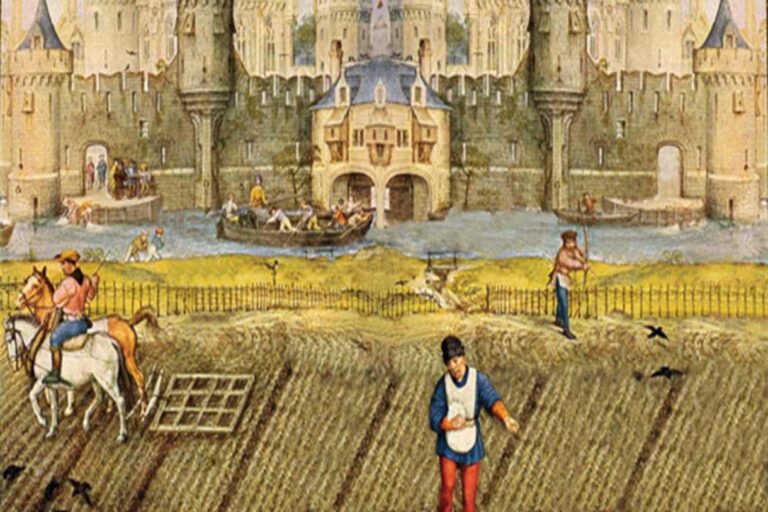Feudalism: meaning, origin and more

What is feudalism?
Feudalism was a social and economic system that emerged in Europe during the Middle Ages. The term “feudalism” is derived from the Latin word “feudum,” which means “fee” or “fief.” The feudal system was based on the exchange of land for loyalty and service. Under this system, kings, lords, and vassals held various roles and responsibilities. While feudalism was eventually replaced by other economic systems, its influence can still be seen in modern society.
The origins and development of feudalism
Feudalism was a social and economic system that emerged in Europe during the Middle Ages, following the collapse of the Roman Empire. The system was characterized by a complex web of relationships between lords and vassals, in which land was exchanged for loyalty and service. The origins of feudalism can be traced back to the 9th and 10th centuries when the Carolingian Empire began to disintegrate.
As central authority weakened, local lords began to establish their own fiefdoms, or territories, and to recruit warriors to defend them. These warriors became known as vassals, and they pledged their loyalty and service to the lord in exchange for land and protection.
The relationship between lords and vassals became more complex, as lords began to grant land to their vassals in return for military service. This system of land tenure became known as feudalism, and it spread throughout Europe over the next several centuries.
Key characteristics of the feudal system
Feudalism was characterized by a number of key features, including the exchange of land for loyalty and service, the hierarchical structure of society, and the role of chivalry and honor in governing social relations.
One of the key features of the feudal system was the exchange of land for loyalty and service. Lords granted land, or fiefs, to their vassals in return for military service and other forms of loyalty. In this way, the feudal system was built on a system of reciprocal obligations, in which lords provided protection and support to their vassals in exchange for their service.
Another important characteristic of feudalism was its hierarchical structure. At the top of the social hierarchy were kings and queens, followed by lords and nobles, and then by knights and vassals. This hierarchy was reinforced by the belief in the divine right of kings, which held that monarchs had been appointed by God to rule over their subjects.
The roles of kings, lords, and vassals in feudal society
The feudal system was organized around a complex web of relationships between kings, lords, and vassals. At the top of the hierarchy was the king or queen, who was responsible for governing the kingdom and maintaining order. The king relied on a network of lords and nobles to administer the kingdom and provide military support in times of war.
Below the king were the lords, who were responsible for administering their own territories or fiefdoms. Lords granted land to their vassals in return for military service and other forms of loyalty. The relationship between lords and vassals was governed by a set of social and legal obligations, which were defined by custom and tradition.
Vassals were typically knights or other warriors who pledged their loyalty and service to their lords in return for land and protection. They were expected to provide military service to their lord in times of war and to pay various fees and taxes to support their lord’s administration.
Feudalism’s impact on European politics and culture
Feudalism played a significant role in shaping European politics and culture during the Middle Ages. At the political level, the feudal system helped to establish a complex web of relationships between rulers and their subjects, which helped to maintain order and stability in a period of frequent warfare and instability.
At the cultural level, feudalism helped to establish a set of values and ideals that would continue to influence European society for centuries to come. The code of chivalry, which governed the behaviour of knights and other members of the nobility, emphasized virtues such as loyalty, honor, and courage. This code of conduct helped to shape the cultural identity of medieval Europe, and it continues to exert an influence on Western culture today.
Also, the feudal system helped to establish the power structures that would shape European politics and society for centuries to come. While the system itself eventually declined and was replaced by other economic systems, such as capitalism, the legacy of feudalism can still be seen in the political and social structures of modern society.
The legacy of feudalism and its continued influence on modern society
Despite its decline and eventual disappearance, feudalism has left a lasting impact on modern society. One of the most significant legacies of feudalism is the idea of social hierarchy and class distinctions. The feudal system was characterized by a rigid social hierarchy, with kings at the top and peasants at the bottom. This hierarchy helped to establish the idea of social classes and the notion that certain individuals or groups are inherently superior or inferior to others.
Another legacy of feudalism is the concept of land ownership and property rights. Feudal lords held extensive land holdings, which they granted to their vassals in return for loyalty and service. This system helped to establish the idea of private property and property rights, which continue to be central to modern economic systems.
The legacy of feudalism can also be seen in modern political structures, particularly in the form of representative democracy. Feudalism relied on a system of representation, in which lords represented their vassals in the king’s court. This system eventually evolved into modern forms of representative democracy, in which elected officials represent the interests of their constituents.
Conclusion
Feudalism played a crucial role in shaping European society during the Middle Ages. Although it is no longer in use, its impact is still visible in many aspects of modern society. Feudalism helped to establish the power structure of the time, and its legacy can be seen in the political and social structures that followed.
By understanding the origins and characteristics of feudalism, we can gain a deeper appreciation of the ways in which it shaped the world we live in today.
Don't miss a thing. Follow us on Telegram and Follow us on WhatsApp. If you love videos then also Subscribe to our YouTube Channel. We are on Twitter as MakeMoneyDotNG.





